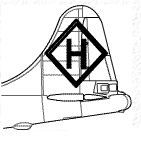
The 444th Air Expeditionary Wing is a provisional unit of the United States Air Force assigned to Air Combat Command to activate or inactivate as needed. It was last activated in 2003.

The 502d Bombardment Group was a World War II Army Air Forces (AAF) strategic bombardment organization. The unit was one of the last few combat groups formed by the AAF, activating on 1 June 1944. After nearly a year training with Boeing B-29 Superfortress, it moved to Guam in April 1945. It flew its first combat mission on 30 June 1945 and its first strike on the Japanese home islands in July. It was awarded the Distinguished Unit Citation for attacks on the Japanese oil industry between 5 August and 15 August 1945. After V-J Day it flew show of force missions and evacuated prisoners of war. It remained in the Pacific until it was inactivated on 15 April 1946.

The 346th Bombardment Group is a former United States Army Air Forces unit. It was last assigned to the 316th Bombardment Wing at Kadena Airfield, Okinawa, where it was inactivated on 30 June 1946. The group was originally a heavy bomber training unit, but was inactivated in a general reorganization of Army Air Forces training units in 1944. It was reorganized as a Boeing B-29 Superfortress group later that year. It moved to Okinawa in 1945, but arrived too late to participate in combat.

The 15th Special Operations Squadron is part of the 1st Special Operations Wing at Hurlburt Field, Florida. It operates Lockheed MC-130J Commando II aircraft in support of special operations.

The 5th Reconnaissance Squadron is part of the 9th Reconnaissance Wing, assigned to Beale Air Force Base, California. It is stationed at Osan Air Base, South Korea as a Geographically Separated Unit (GSU). The squadron is the fifth oldest United States Air Force squadron, its history dating to 5 May 1917 as the World War I 5th Aero Squadron.

The 99th Reconnaissance Squadron is a squadron of the United States Air Force. It is assigned to the 9th Operations Group, Air Combat Command, stationed at Beale Air Force Base, California. The squadron is equipped with the Lockheed U-2 Dragon Lady reconnaissance aircraft.
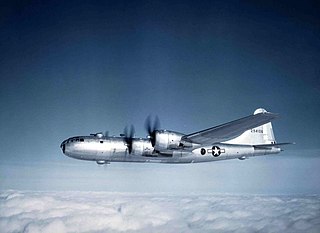
The 435th Bombardment Squadron, also known as the "Kangaroo" Squadron, is an inactive United States Air Force unit. It was formed in Australia in March 1942 as the 40th Reconnaissance Squadron and participated in combat in the Southwest Pacific Theater until November, when it was withdrawn from combat and returned to the United States, where it acted as a Replacement Training Unit until October 1943, when its personnel and equipment were withdrawn.

The 35th Bombardment Squadron is an inactive United States Air Force unit. It was activated in January 1940 as the United States built up its armed forces prior to World War II. In the fall of 1941, it deployed to the Caribbean and, following the attack on Pearl Harbor engaged in antisubmarine patrols. Following the transfer of the land based antisubmarine mission to the Navy, and with the lessening of threats to the Panama Canal, the squadron returned to the United States, where it was disbanded in June 1944.

The 7th Reconnaissance Squadron is a squadron of the United States Air Force. It is assigned to the 319th Operations Group and is stationed at Naval Air Station Sigonella, Sicily, Italy.

The 74th Reconnaissance Squadron is an active United States Air Force unit, part of the 9th Reconnaissance Wing at Beale Air Force Base, California. The squadron was first active during World War II as the 74th Aero Squadron. In 1933 it was consolidated with the 74th Pursuit Squadron, which had been organized as a reserve training organization in 1927, activating in the Panama Canal Zone, where it served during World War II as the 74th Bombardment Squadron.
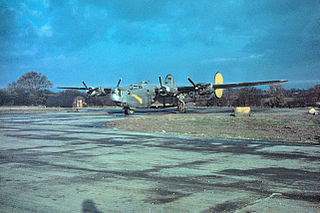
The 847th Bombardment Squadron is a former United States Army Air Forces unit that was originally activated as the 421st Bombardment Squadron. Its last assignment was with the 489th Bombardment Group at Great Bend Army Air Field, Kansas where it was inactivated on 28 March 1945. As the 20th Antisubmarine Squadron, the squadron performed antisubmarine patrols in 1942 and 1943. After reforming as a heavy bomber squadron, it engaged in the strategic bombing campaign against Germany in the European Theater of Operations until returning to the United States in late 1944. The squadron was inactivated while its parent group was training as a very heavy bombardment unit.

The 863rd Bombardment Squadron is a former United States Army Air Forces unit. It was first organized as the 518th Bombardment Squadron in October 1942, when it replaced a National Guard unit participating in antisubmarine patrols off the Atlantic coast, becoming the 13th Antisubmarine Squadron in November. When the Navy took over the coastal antisubmarine mission in August 1943, the squadron moved to the western United States, where it formed the cadre for the 493rd Bombardment Group and was redesignated as the 863rd. It moved to England in the spring of 1944 and participated in the strategic bombing campaign against Germany until April 1945. It returned to the United States and was inactivated in August 1945.

The Second Bombardment Wing, abbreviated as 2nd Bombardment Wing of the United States Army Air Forces is a disbanded unit whose last assignment was with the Continental Air Forces, based at McChord Field, Washington. It was last active in November 1945.
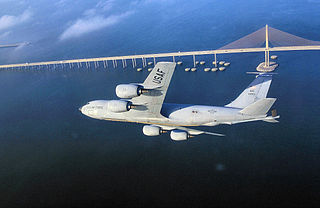
The 6th Operations Group is the operational flying component of the 6th Air Refueling Wing, stationed at MacDill Air Force Base, Florida.

The 362d Tactical Electronic Warfare Squadron is an inactive United States Air Force unit. It was last assigned to the 6498th Air Base Wing at Da Nang Air Base, Republic of Vietnam. It was inactivated on 28 February 1973.

The 920th Air Refueling Squadron is an inactive United States Air Force unit. It was last assigned to the 379th Bombardment Wing at Wurtsmith Air Force Base, Michigan where it was inactivated on 30 September 1992.

The 904th Expeditionary Air Refueling Squadron is an inactive United States Air Force unit. It was last assigned to the 320th Bombardment Wing at Mather Air Force Base, California, where it was inactivated on 30 September 1986.

The 702d Tactical Air Support Squadron is an inactive United States Air Force unit. It was part of the 601st Tactical Air Control Wing at Bergstrom Air Force Base, Texas, from 1969 until it was inactivated on 30 November 1975.

The 464th Bombardment Squadron is an inactive United States Air Force unit. Its last assignment was with 382d Bombardment Group at Camp Anza, California, where it was inactivated on 4 January 1946. From 1942 the squadron served as a replacement training unit for heavy bomber aircrews. It was inactivated in the spring of 1944 in a general reorganization of Army Air Forces training units. The squadron was activated again in 1944 as a Boeing B-29 Superfortress unit.
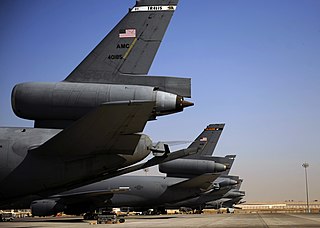
The 908th Expeditionary Air Refueling Squadron is a provisional United States Air Force (USAF) unit. It is assigned to the 378th Air Expeditionary Wing at Prince Sultan Air Base in Saudi Arabia. It has supported combat operations in Afghanistan, Iraq, and Syria from its previous location of Al Dhafra Air Base in the United Arab Emirates. The squadron has a varied background, having been formed by a series of consolidations of no fewer than five distinct units.



